Tonight is the 87th Academy Awards ceremony. The Academy Awards, better known as The Oscars, were first presented in 1929 at the Hollywood Roosevelt Hotel, and are seen now as the most prestigious cinema awards ceremony in the world. This year, the Brits Benedict Cumberbatch (for his portrayal of Alan Turing in The Imitation Game) and Eddie Redmayne (for his role as Stephen Hawking in The Theory of Everything) are nominated as Best Actor in a Leading Role. As Best Actress in a Leading Role are nominated French Marion Cotillard (for Two Days, One Night), British Felicity Jones (for The Theory of Everything) and British Rosamund Pike (for Gone Girl). Through the years many European Film Stars have won an Oscar: so today at EFSP 12 postcards of European winners from the past.

1927-1928: Emil Jannings won for both The Last Command and The Way of All Flesh. German postcard by Ross Verlag, Foreign, no. 99/1. Photo: Paramount. Publicity still for The Last Command (Josef von Sternberg, 1928). Jannings received the award at the 1st Academy Awards ceremony ever held. In the first three years of the awards, actors were nominated as the best in their categories. At that time, all of their work during the qualifying period (as many as three films, in some cases) was listed after the award.
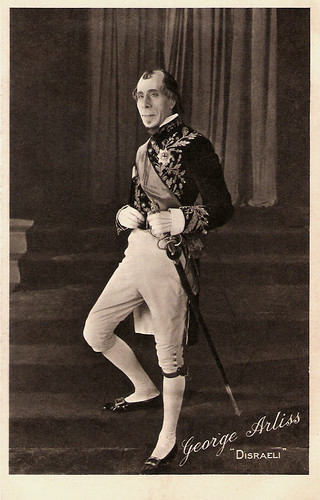
1929-1930: George Arliss won for Disraeli. Vintage postcard. Photo: publicity still for Disraeli (Alfred E. Green, 1929). During the 3rd ceremony held in 1930, only one of the films was cited in each winner's final award, even though each of the acting winners had two films following their names on the ballots. For Arliss it was The Green Goddess. Both films were based on hit stage plays in which Arliss had starred. The following year, this unwieldy and confusing award system was replaced by the current system in which an actor is nominated for a specific performance in a single film.

1939: Vivien Leigh won for Gone with the Wind. Romanian postcard by Casa Filmului Acin. Photo: MGM. Publicity still for Gone with the Wind (Victor Flemyng, 1939). Gone with the Wind brought Leigh immediate attention and fame. The film won 10 Academy Awards including a Best Actress award for Leigh, who also won a New York Film Critics Circle Award for Best Actress. She won another Oscar for her role as Blanche DuBois in the film version of A Streetcar Named Desire (Elia Kazan, 1951).
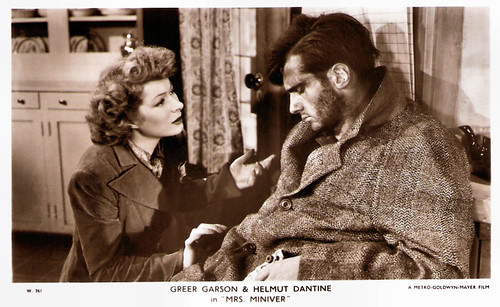
1942: Greer Garson won for Mrs. Miniver. British postcard in the Picturegoer Series, London, nr. W 361. Photo: MGM. Publicity still for Mrs. Miniver (1942) with Helmut Dantine. As one of MGM's major stars during the 1940s, Garson received seven Academy Award nominations, including a record five consecutive nominations, winning the Best Actress award for Mrs. Miniver (1942).
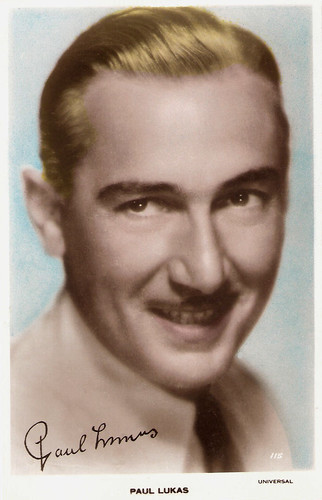
1943: Paul Lukas won for Watch on the Rhine. British Art Photo postcard, no. 115. Photo: Universal. In Watch on the Rhine (Herman Shumlin, 1943), Lukas played a man working against the Nazis, a role he originated in the Broadway premiere of the play of the same name in 1941. His portrayal of Kurt Mueller, a German émigré with an American wife, played by Bette Davis, was universally lauded by critics. He won out over luminary efforts as Humphrey Bogart in Casablanca, and Gary Cooper in For Whom the Bell Tolls.
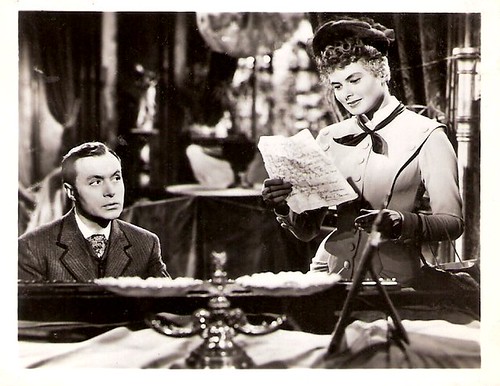
1944: Ingrid Bergman for Gaslight. Small card. Photo: MGM. Photo: still for Gaslight (George Cukor, 1944) with Charles Boyer. Bergman won three Academy Awards, two Emmy Awards, four Golden Globe Awards and the Tony Award for Best Actress. In 1944, she won her first Academy Award for Best Actress for Gaslight (George Cukor, 1944), a film in which George Cukor directed her as a wife driven close to madness by co-star Boyer.
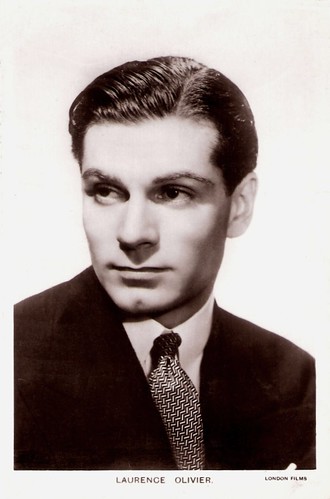
1948: Laurence Olivier won for Hamlet. British postcard in the Picturegoer Series, London, no. 695b. Photo: London Films. Hamlet was part of a trilogy of Shakespeare films Olivier made as actor-director: Henry V (1944), Hamlet (1948), and Richard III (1955). Hamlet became the first non-American film to win the Academy Award for Best Picture.

1955: Anna Magnani won for The Rose Tattoo. German postcard by Ufa, Berlin-Tempelhof, no. FK 4136. Photo: Bud Fraker. Magnani won the Oscar along with four other international awards, for her portrayal of a Sicilian widow in The Rose Tattoo (Daniel Mann, 1955), based on the play by Tennessee Williams. It co-starred Burt Lancaster, and was Magnani's first English speaking role in a mainstream Hollywood movie.

1959: Simone Signoret for Room at the Top. East-German postcard by VEB Progress Film-Vertrieb, Berlin, no. 1412. Signoret was the only French cinema actress to receive an Oscar until Juliette Binoche in 1997 (Supporting Actress) and Marion Cotillard in 2008 (Best Actress), and the first woman to win the award appearing in a foreign film, Room at the Top (1959). In her lifetime, Signoret also received a César, three BAFTAs, an Emmy, Cannes Film Festival recognition, the Silver Bear for Best Actress awards and a Golden Globe nomination.

1961: Maximilian Schell for Judgement at Nuremberg. German postcard by Friedr. W. Sander-Verlag, Minden/Kolbri-Karte, no. 2005. Photo: 20th Century Fox. Publicity still for Judgment at Nuremberg (Stanley Kramer, 1961). For Schell, his part as an attorney in Judgment at Nuremberg, a fictionalized re-creation of the Nuremberg War Trials, was his second acting role in Hollywood. In 1959, he had already played the same role on TV in an edition of Playhouse 90 a live TV production of Judgment at Nuremberg. His performance in the TV drama was considered so good that he was selected to play the same part in the film version. His Oscar was the first win for a German-speaking actor since World War II.
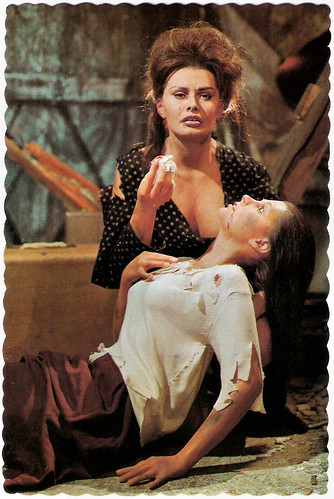
1961: Sophia Loren for La ciociara/Two Women. American postcard by Movieland Wax Museum, Buena Park. Photo: Mike Roberts. Wax figures of Sophia Loren and Eleonor Brown in La ciociara/Two Women (1960). Loren donated the tattered dress she wore during filming of La ciociara for her figure to wear at Movieland. Loren's performance as Cesira in Vittorio De Sica's La ciociara made her the first artist to win an Oscar for a foreign-language performance. She holds the record for having earned six David di Donatello Awards for Best Actress, the most ever received: La ciociara/Two Women(Vittorio De Sica, 1960), Yesterday, Ieri, oggi, domani/Yesterday, Today And Tomorrow (Vittorio De Sica, 1963), Matrimonio all'Italiana/Marriage Italian Style (Vittorio De Sica, 1964) for which she was nominated for a second Oscar, I Girasoli/The Sunflowers (Vittorio De Sica, 1972), Il Viaggio/The Voyage (Vittorio De Sica, 1974) and Una giornata particolare/A Special Day (Ettore Scola, 1977).

1964: Julie Andrews for Mary Poppins. French postcard by Les Presses de Belleville, no.107. Photo: Walt Disney Productions. Still from Mary Poppins (1964). British Julie Andrews made her feature film debut in Mary Poppins (Robert Stevenson, 1964). The following year, she received her second Academy Award nomination for The Sound of Music (Robert Wise, 1965), and won the Golden Globe Award for Best Actress in a Musical.
Since its inception, the Best Actor award has been given to 77 actors. Daniel Day-Lewis has received the most awards in this category with three Oscars. Spencer Tracy and Laurence Olivier were nominated on nine occasions, more than any other actor. There have been two years in which all four of the top acting Academy Awards were presented to Europeans. At the 37th Academy Awards (1964), the winners were Rex Harrison (British), Julie Andrews (British), Peter Ustinov (British), and Lila Kedrova (Russian-born French). At the 80th Academy Awards (2007), the winners were Daniel Day-Lewis (British and Irish), Marion Cotillard (French), Javier Bardem (Spanish), and Tilda Swinton (British).
Source: Wikipedia.

1927-1928: Emil Jannings won for both The Last Command and The Way of All Flesh. German postcard by Ross Verlag, Foreign, no. 99/1. Photo: Paramount. Publicity still for The Last Command (Josef von Sternberg, 1928). Jannings received the award at the 1st Academy Awards ceremony ever held. In the first three years of the awards, actors were nominated as the best in their categories. At that time, all of their work during the qualifying period (as many as three films, in some cases) was listed after the award.

1929-1930: George Arliss won for Disraeli. Vintage postcard. Photo: publicity still for Disraeli (Alfred E. Green, 1929). During the 3rd ceremony held in 1930, only one of the films was cited in each winner's final award, even though each of the acting winners had two films following their names on the ballots. For Arliss it was The Green Goddess. Both films were based on hit stage plays in which Arliss had starred. The following year, this unwieldy and confusing award system was replaced by the current system in which an actor is nominated for a specific performance in a single film.

1939: Vivien Leigh won for Gone with the Wind. Romanian postcard by Casa Filmului Acin. Photo: MGM. Publicity still for Gone with the Wind (Victor Flemyng, 1939). Gone with the Wind brought Leigh immediate attention and fame. The film won 10 Academy Awards including a Best Actress award for Leigh, who also won a New York Film Critics Circle Award for Best Actress. She won another Oscar for her role as Blanche DuBois in the film version of A Streetcar Named Desire (Elia Kazan, 1951).

1942: Greer Garson won for Mrs. Miniver. British postcard in the Picturegoer Series, London, nr. W 361. Photo: MGM. Publicity still for Mrs. Miniver (1942) with Helmut Dantine. As one of MGM's major stars during the 1940s, Garson received seven Academy Award nominations, including a record five consecutive nominations, winning the Best Actress award for Mrs. Miniver (1942).

1943: Paul Lukas won for Watch on the Rhine. British Art Photo postcard, no. 115. Photo: Universal. In Watch on the Rhine (Herman Shumlin, 1943), Lukas played a man working against the Nazis, a role he originated in the Broadway premiere of the play of the same name in 1941. His portrayal of Kurt Mueller, a German émigré with an American wife, played by Bette Davis, was universally lauded by critics. He won out over luminary efforts as Humphrey Bogart in Casablanca, and Gary Cooper in For Whom the Bell Tolls.

1944: Ingrid Bergman for Gaslight. Small card. Photo: MGM. Photo: still for Gaslight (George Cukor, 1944) with Charles Boyer. Bergman won three Academy Awards, two Emmy Awards, four Golden Globe Awards and the Tony Award for Best Actress. In 1944, she won her first Academy Award for Best Actress for Gaslight (George Cukor, 1944), a film in which George Cukor directed her as a wife driven close to madness by co-star Boyer.

1948: Laurence Olivier won for Hamlet. British postcard in the Picturegoer Series, London, no. 695b. Photo: London Films. Hamlet was part of a trilogy of Shakespeare films Olivier made as actor-director: Henry V (1944), Hamlet (1948), and Richard III (1955). Hamlet became the first non-American film to win the Academy Award for Best Picture.

1955: Anna Magnani won for The Rose Tattoo. German postcard by Ufa, Berlin-Tempelhof, no. FK 4136. Photo: Bud Fraker. Magnani won the Oscar along with four other international awards, for her portrayal of a Sicilian widow in The Rose Tattoo (Daniel Mann, 1955), based on the play by Tennessee Williams. It co-starred Burt Lancaster, and was Magnani's first English speaking role in a mainstream Hollywood movie.

1959: Simone Signoret for Room at the Top. East-German postcard by VEB Progress Film-Vertrieb, Berlin, no. 1412. Signoret was the only French cinema actress to receive an Oscar until Juliette Binoche in 1997 (Supporting Actress) and Marion Cotillard in 2008 (Best Actress), and the first woman to win the award appearing in a foreign film, Room at the Top (1959). In her lifetime, Signoret also received a César, three BAFTAs, an Emmy, Cannes Film Festival recognition, the Silver Bear for Best Actress awards and a Golden Globe nomination.

1961: Maximilian Schell for Judgement at Nuremberg. German postcard by Friedr. W. Sander-Verlag, Minden/Kolbri-Karte, no. 2005. Photo: 20th Century Fox. Publicity still for Judgment at Nuremberg (Stanley Kramer, 1961). For Schell, his part as an attorney in Judgment at Nuremberg, a fictionalized re-creation of the Nuremberg War Trials, was his second acting role in Hollywood. In 1959, he had already played the same role on TV in an edition of Playhouse 90 a live TV production of Judgment at Nuremberg. His performance in the TV drama was considered so good that he was selected to play the same part in the film version. His Oscar was the first win for a German-speaking actor since World War II.

1961: Sophia Loren for La ciociara/Two Women. American postcard by Movieland Wax Museum, Buena Park. Photo: Mike Roberts. Wax figures of Sophia Loren and Eleonor Brown in La ciociara/Two Women (1960). Loren donated the tattered dress she wore during filming of La ciociara for her figure to wear at Movieland. Loren's performance as Cesira in Vittorio De Sica's La ciociara made her the first artist to win an Oscar for a foreign-language performance. She holds the record for having earned six David di Donatello Awards for Best Actress, the most ever received: La ciociara/Two Women(Vittorio De Sica, 1960), Yesterday, Ieri, oggi, domani/Yesterday, Today And Tomorrow (Vittorio De Sica, 1963), Matrimonio all'Italiana/Marriage Italian Style (Vittorio De Sica, 1964) for which she was nominated for a second Oscar, I Girasoli/The Sunflowers (Vittorio De Sica, 1972), Il Viaggio/The Voyage (Vittorio De Sica, 1974) and Una giornata particolare/A Special Day (Ettore Scola, 1977).

1964: Julie Andrews for Mary Poppins. French postcard by Les Presses de Belleville, no.107. Photo: Walt Disney Productions. Still from Mary Poppins (1964). British Julie Andrews made her feature film debut in Mary Poppins (Robert Stevenson, 1964). The following year, she received her second Academy Award nomination for The Sound of Music (Robert Wise, 1965), and won the Golden Globe Award for Best Actress in a Musical.
Since its inception, the Best Actor award has been given to 77 actors. Daniel Day-Lewis has received the most awards in this category with three Oscars. Spencer Tracy and Laurence Olivier were nominated on nine occasions, more than any other actor. There have been two years in which all four of the top acting Academy Awards were presented to Europeans. At the 37th Academy Awards (1964), the winners were Rex Harrison (British), Julie Andrews (British), Peter Ustinov (British), and Lila Kedrova (Russian-born French). At the 80th Academy Awards (2007), the winners were Daniel Day-Lewis (British and Irish), Marion Cotillard (French), Javier Bardem (Spanish), and Tilda Swinton (British).
Source: Wikipedia.
No comments:
Post a Comment